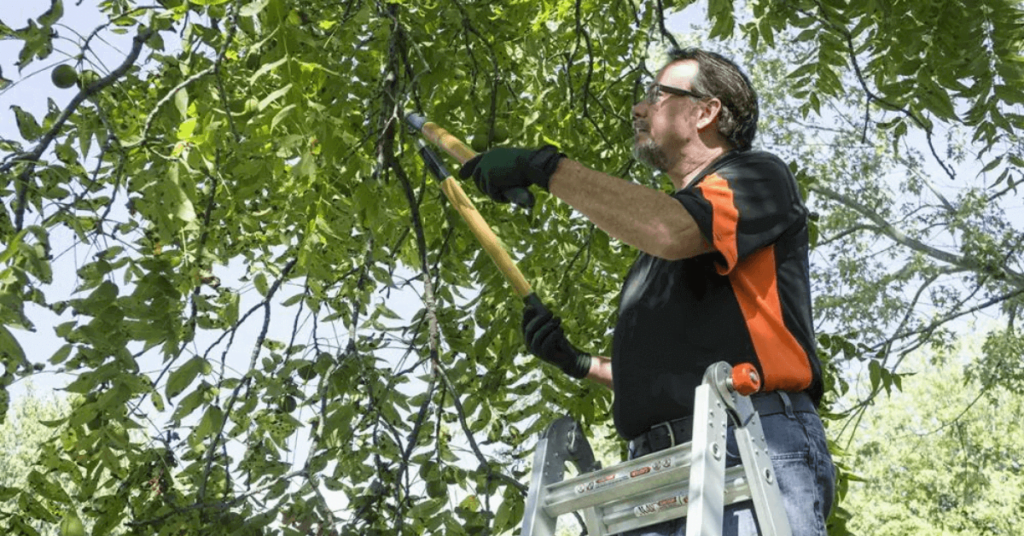When autumn arrives and the temperatures begin to drop, something magical happens in nature that never fails to take our breath away. The leaves on the trees turn vibrant shades of red, yellow and orange before eventually falling to the ground. But what is it about this season that causes these incredible transformations?
In this blog post, we’ll explore the biology behind autumnal leaf color changes, how climate affects them and uncover the science behind why leaves change color during fall and fascinating facts about this natural process. So stay tuned!
Reasons Of Leaves Color Changes in Fall
The exact reason leaves change color in the fall is still a mystery, but several factors contribute to this process. As temperatures begin to cool, trees begin to shut down their food-making process and stop producing chlorophyll. This chlorophyll is responsible for the green color of leaves throughout much of the year.
As the chlorophyll dissipates, other pigments in the leaves such as carotenoids and anthocyanins begin to show their colors. Carotenoids produce yellow, orange and brown hues while anthocyanins create reds and purples. The combination of these colors makes for a beautiful display during autumn.
In addition, the amount of sunlight and the availability of water can also affect the intensity of fall colors. When there is less daylight and a decrease in temperatures, photosynthesis slows down and chlorophyll production ceases. This allows for more vivid and vibrant hues to be seen. Also, when conditions are dry, trees will shut down their water supply to the leaves, causing them to dry out.
Additionally, different tree species will produce different colors of leaves in the fall. For example, maples tend to be a brighter red while oaks typically have more muted yellows and oranges.
What is The Science behind leaf color change in fall?
The science behind the leaf color change in fall is complex and fascinating. However, it includes
1) Decrease in Photosynthesis and chlorophyll
As temperatures cool and the days become shorter, trees begin to prepare for winter by decreasing chlorophyll production. Chlorophyll is a green pigment found in plant cells that absorbs sunlight and uses it to create food energy, a process known as photosynthesis.
As fewer green chlorophyll molecules are produced, other pigments in the leaves such as yellow and orange carotenoids begin to show through. This is why leaves become more colorful during the fall season.
2) Temperature
The temperatures during fall also play an important role in the color changes of leaves. During the warmer summer months, plants produce more of the green pigment chlorophyll and less of the other pigments. As temperatures drop during fall, the production of chlorophyll slows and eventually stops, allowing for other pigments such as yellow, orange and red to be seen.
3) Light
The amount of light during fall is also an important factor in the color change process. Leaves contain more chlorophyll when exposed to longer and brighter days.
As the light decreases during fall, the production of green chlorophyll is reduced, allowing other pigments to become visible. This is why leaves tend to be more vibrant on sunny fall days rather than on dull, cloudy days.
4) Nutrients
The availability of nutrients can also affect the color change of leaves. Nutrients such as nitrogen and phosphorus are essential for synthesizing chlorophyll, so an abundance of these elements can cause the leaves to be more green than normal. Leaves may turn different shades of yellow, orange or red if certain nutrients are deficient during the fall season.
5) Hormonal changes in the tree
Finally, hormonal changes in the tree itself can also contribute to leaf color change in the fall. Trees produce hormones known as auxins which help regulate growth and development. As temperatures cool during the fall season, trees reduce the production of these hormones, causing less chlorophyll to be produced.
Note: Get 15% OFF on All Professional Tree Services in Roswell GA
Factors that Affect Leaf Color
There are a variety of factors that can affect the color of leaves. These include genes and genetics, climate and weather conditions, soil nutrients, disease and pest infestations and age of the leaves.
1) Genes and genetics
The genetic makeup of plants can influence the color of their leaves, as certain traits are passed on from parents to offspring. In addition, some plants may be bred to produce specific leaf colors as desired by the breeder.
2) Climate
Climate and weather conditions are also important in determining leaf color. For example, extreme temperatures or drought can cause leaves to turn yellow or brown, while hot, humid climates can cause leaves to turn dark green.
3) Soil nutrients
Soil nutrients are also an important factor influencing leaf color, as certain elements and compounds in the soil can cause leaves to change color. For instance, nitrogen-rich soils may cause leaves to turn a darker green, while phosphorus-rich soils may cause leaves to turn yellow or red.
4) Disease and pest infestations
If a plant is affected by disease or pests, it can cause the leaves to turn yellow or brown. Additionally, some diseases may attack only certain parts of the plant, such as the leaves, which can cause them to change color.
5) Age of the leaves
Finally, age is also a factor that affects leaf color. As a tree matures, it will shed its older leaves in favor of new growth. These older leaves tend to be paler in color and may turn yellow or brown as they age.
Final Words
While there are many theories as to why leaves change color in the fall, one of the most agreed-upon explanations is that it is due to a combination of diminishing sunlight, shorter days and a decrease in temperature. This process has an important role to play in the delicate balance of the ecosystem and it helps trees prepare for colder weather and eventual dormancy.
Leaves change color in the fall, a beautiful reminder of the cycle of life and a great opportunity to appreciate the beauty of nature. We hope this article has helped you better understand why leaves change color in the fall. Happy autumn!



